
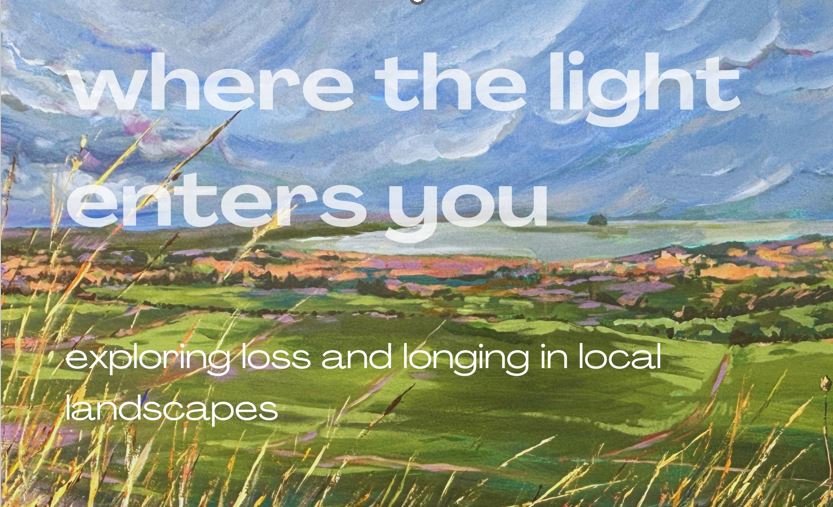
We are opening back up for the summer with a photography exhibition of images taken along the John Muir Way by Sharon McMenemy Khan/4 Pegs Gallery. Celebrating 10 years of the John Muir Way.
“When you’re preparing for the John Muir Way, you focus on navigating: distances, signposts, gradients. Once you start riding along the path, you begin to relax and enjoy the countryside. You disconnect from everyday life and connect with the history of the people and the place. It’s a heart-warming journey that connects you to nature.”
The photographs are taken at different viewpoints from Falkirk to Dunbar.
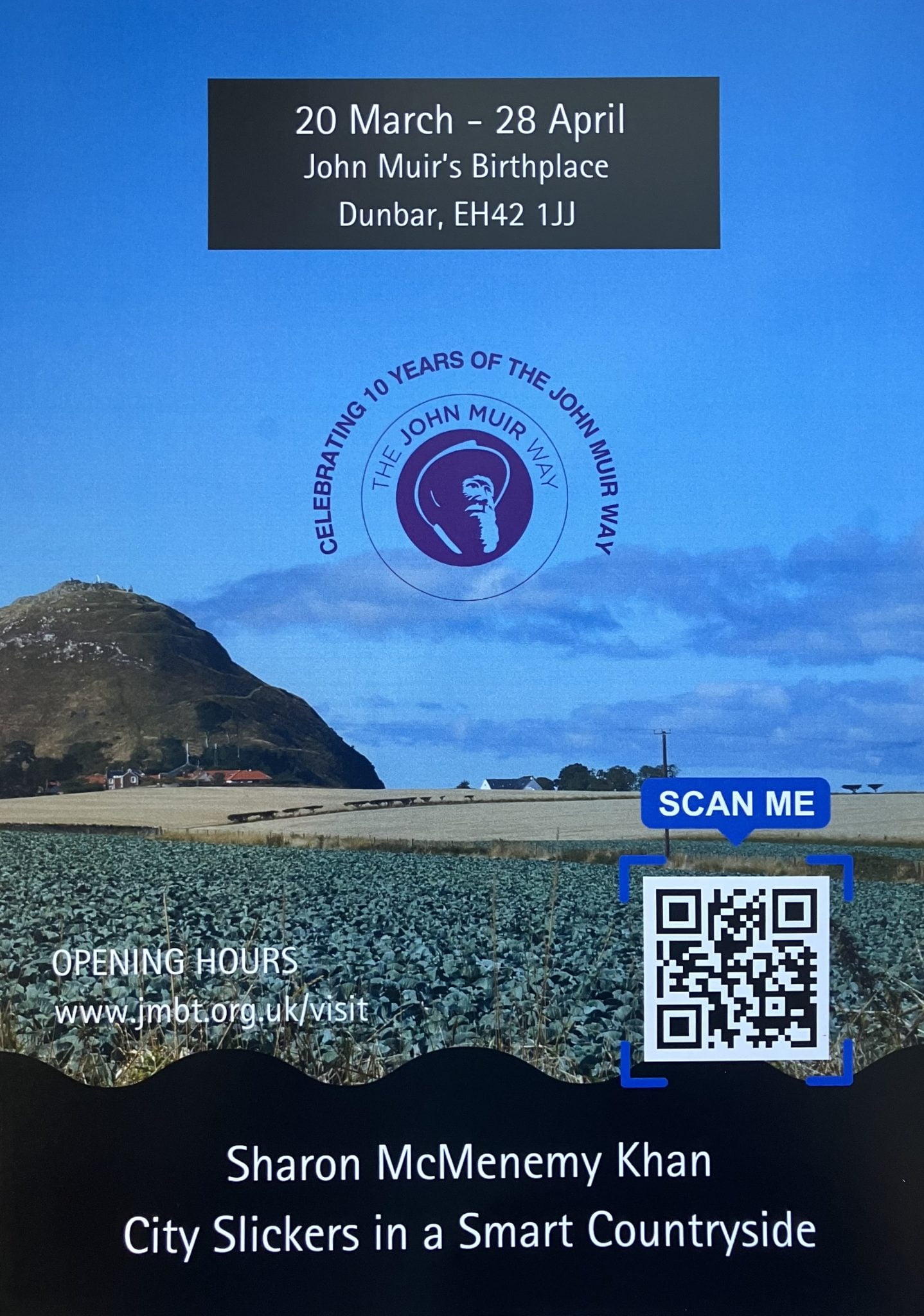
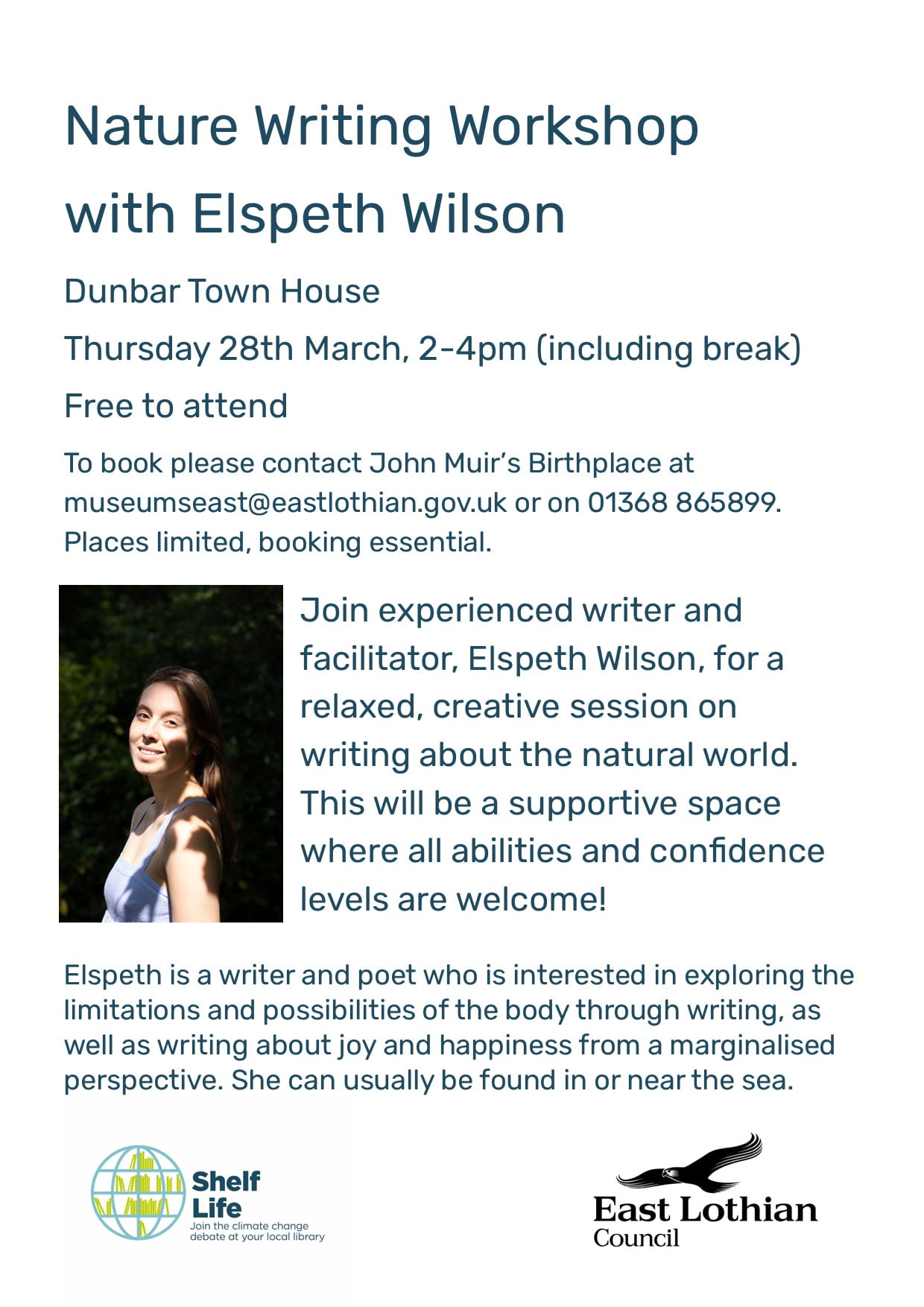
We are really excited to be hosting a workshop with experienced writer and facilitator Elspeth Wilson. Join Elspeth for a relaxed, creative session on writing about the natural world. This will be a supportive space where all abilities and confidence levels are welcome!
To book please contact John Muir’s Birthplace at museumseast@eastlothian.gov.uk or on 01368 865899. Booking is essential as places are limited. Do feel free to get in touch or pop in if you have any questions.
Elspeth Wilson is a writer and poet who is interested in exploring the limitations and possibilities of the body through writing, as well as writing about joy and happiness from a marginalised perspective. Her nature writing has been shortlisted for Canongate’s Nan Shepherd Prize and Penguin’s Write Now scheme. Her debut poetry pamphlet, Too Hot to Sleep, is published by Written Off Publishing and was shortlisted for the Saltire Society’s 2023 Poetry Book of the Year Award. Her debut novel, These Mortal Bodies, is forthcoming with Simon and Schuster in 2025. She can usually be found in or near the sea.
The workshop is part of the Scottish Library and Information Council‘s ‘Shelf Life’ project promoting climate engagement across libraries – we’re happy to be sharing it with East Lothian Library Services!
We are delighted to say that East Lothian Council Museums Service are recruiting Seasonal Museum Assistants to work with us from April – September in 2024. The closing date for applications is Sunday 28th January.
We are looking for people with enthusiasm, flexibility, great communication and organisational skills and a passion for delivering great customer service to join our team to help visitors get the most from their visit to our museums. Museum Assistants open and close our museums, welcome visitors to our venues, answer enquiries and make sure that everyone has an enjoyable and safe visit. They operate our shops, assist with school and other groups, activities, events and exhibitions.
We operate four museums and have a range of shift patterns available (including at John Muir’s Birthplace).
For more information on the individual posts, the role and how to apply take a look on MyJobScotland here.
We would like to invite exhibitors from across the UK to be part of a ‘Climate Call to Action’. Combining the best in visual art with a passion for inspiring climate action, we plan to hold a series of exhibitions from April 2024 to encourage climate action.
We welcome entries from amateurs or professionals working across a diversity of art forms, including artists, photographers, makers, crafters and community groups.
![]() opportunity to host meet the artist sessions and workshops
opportunity to host meet the artist sessions and workshops
![]() Dunbar High Street location with 10m wall space and case
Dunbar High Street location with 10m wall space and case
![]() expressions of interest by 31st January 2024 to John Muir’s Birthplace,126 High Street, Dunbar, EH42 1JJ, museumseast@eastlothian.gov.uk, 01368 8659899.
expressions of interest by 31st January 2024 to John Muir’s Birthplace,126 High Street, Dunbar, EH42 1JJ, museumseast@eastlothian.gov.uk, 01368 8659899.
Please don’t hesitate to be in touch with any further queries. We’re open to both first-time and seasoned exhibitors – no question is too silly!
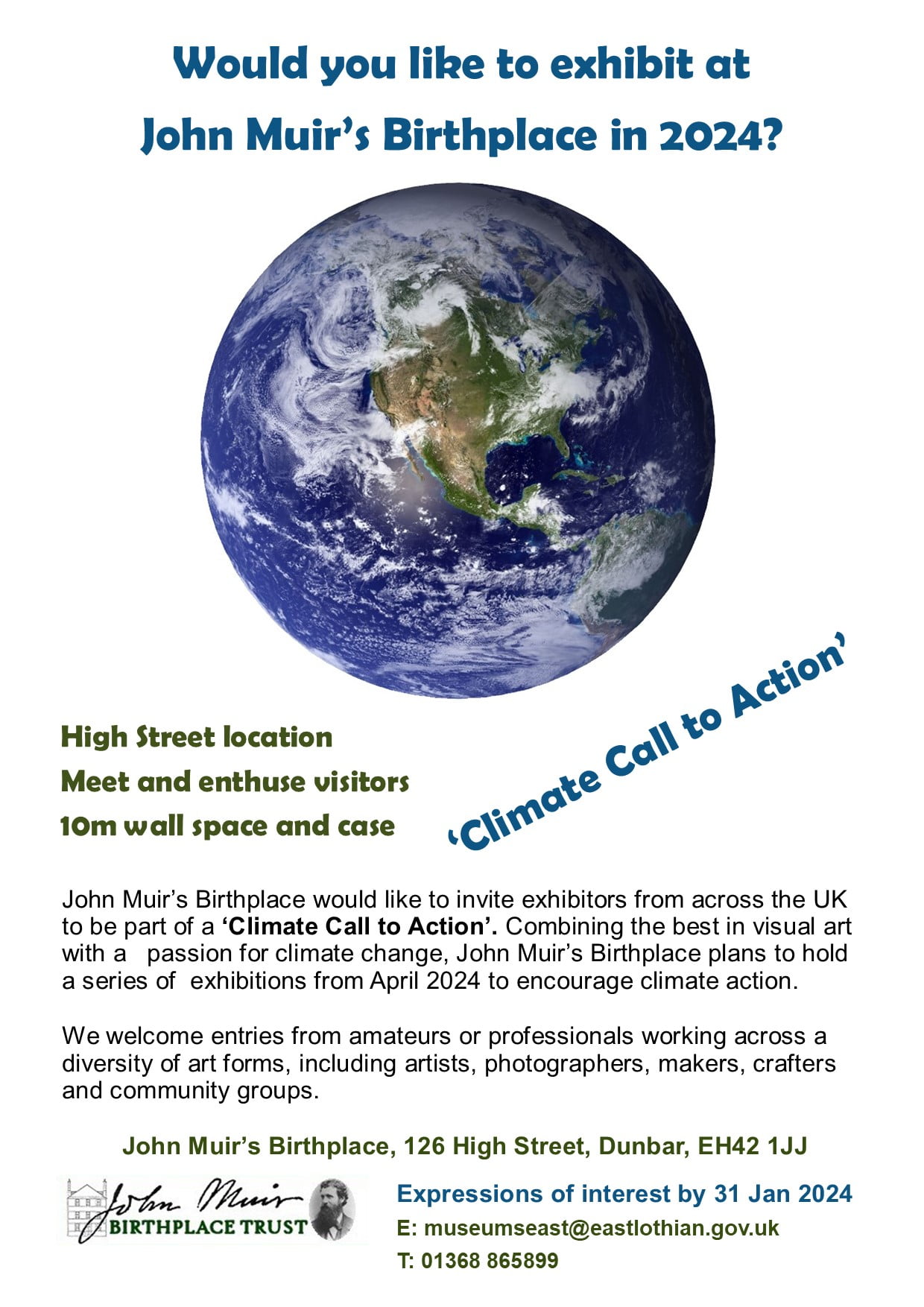
John Muir’s Birthplace will be closed from 25th December 2023 to 2nd January 2024 for a festive break. We are open up until Christmas Eve for all your last minute Christmas shopping needs. If you are planning on visiting us on the 24th please note that we’ll be closing at 4pm rather than our usual 5pm.
We are looking forward to welcoming you all back to the museum on the 3rd of January!
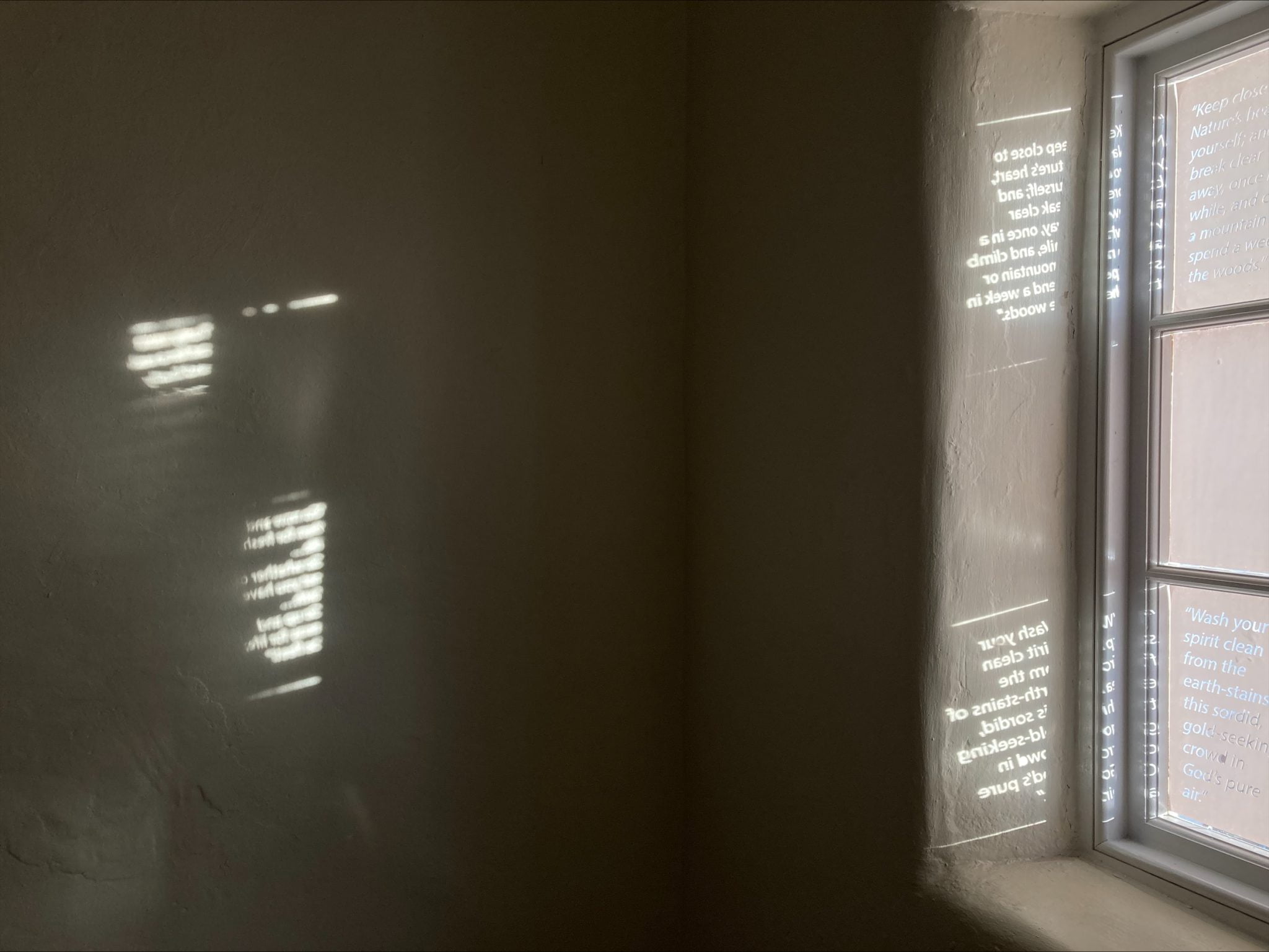
We want to say a huge thank you to all our visitors that made this year so special – John Muir Way walkers, local primary schools doing their John Muir Awards, pilgrims from the US, and all the local families who pop in for a nosey (and sometimes just to use the loo)!
Some of our highlights from this year are:
Who knows what 2024 has in store? In the meantime thank you for all your continued support, and we hope you all have a peaceful winter break.
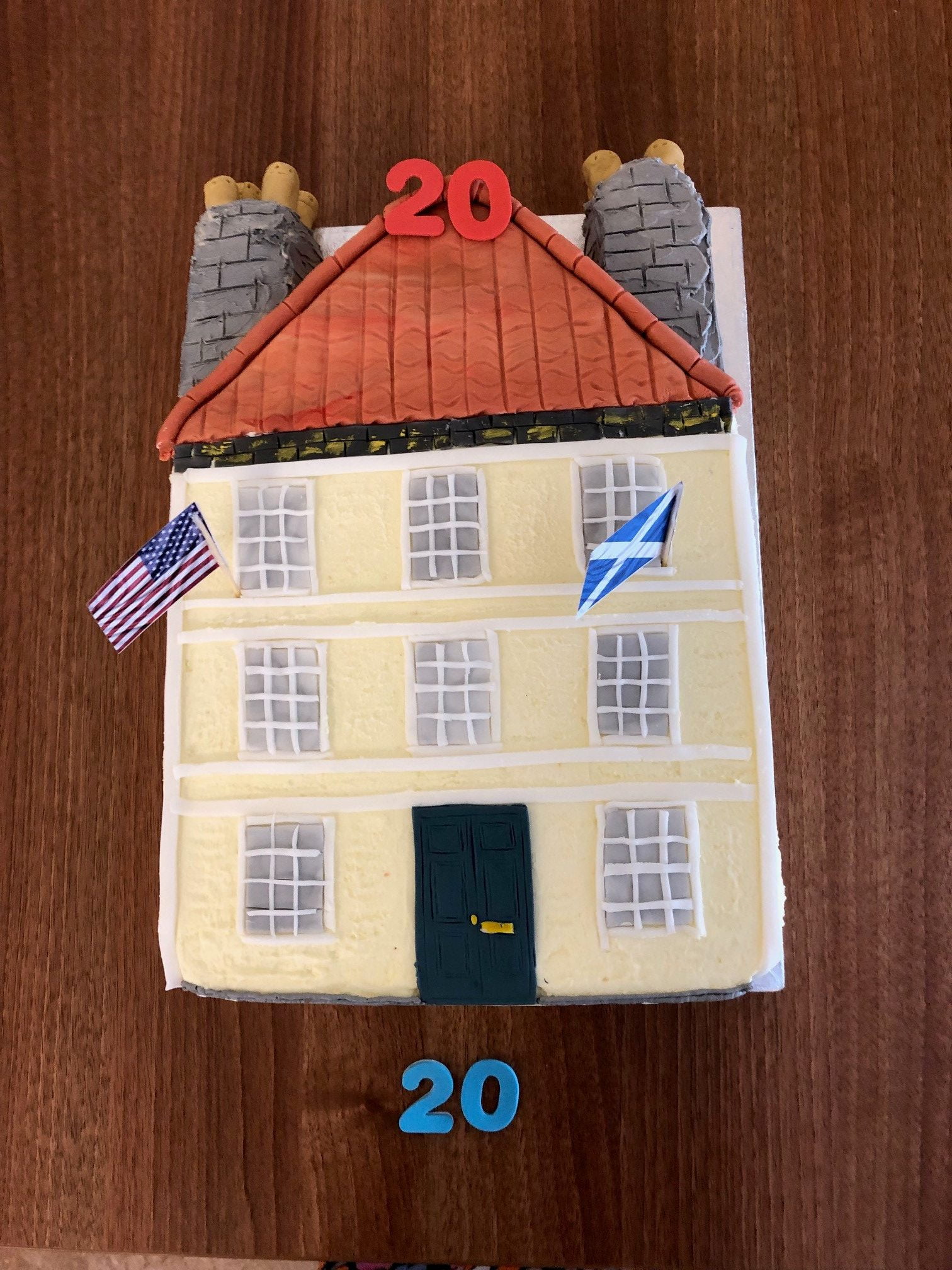
(Thank you to GreyGoose_Bakery for our wonderful birthday cake!)
Do take a look at our official press release marking our 20th anniversary:
John Muir’s Birthplace on Dunbar’s High Street opened its doors for the first time on 23rd August 2003. At a celebration event to mark the 20th anniversary of the Birthplace, Trustees of the John Muir Birthplace Charitable Trust and staff of East Lothian Council’s Museum Service welcomed many of those involved in the planning, procurement, and development of the museum. Other guests included representatives from local schools and organisations that are actively engaged with the need to care for the environment in all its forms. John Muir has been – and continues to be – an inspiration for many.
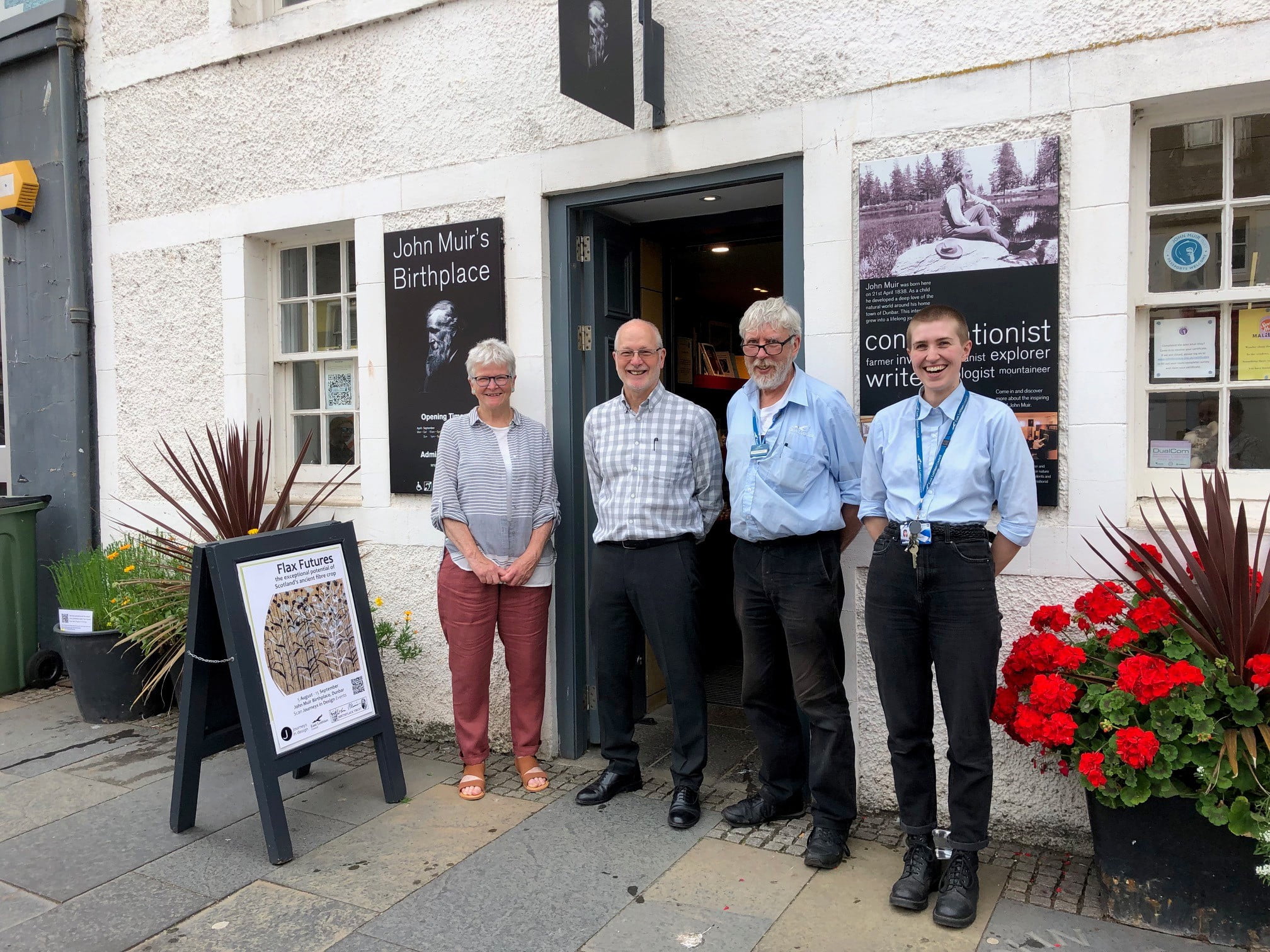
John Muir was born in Dunbar, Scotland, on 21st April 1838. As a child he developed a deep love of the natural world. This grew into a lifelong journey, both physical and spiritual, of exploration, revelation, hardship and wonder. His introduction to Yosemite Valley, California, resulted in his campaign to preserve wilderness for wilderness’ sake. This led to the establishment of the world’s first national park system. Today he is remembered as a pioneer of the modern conservation movement. More than a century on his ideas are more relevant than ever and John Muir continues to inspire people all over the world.
There have been over 220,000 visitors to the Birthplace since its opening. From distinguished visitors including direct descendants of Muir and the then Prince Charles and Prince Edward to tourists from all over the world, local residents and school children. The most common comments left by visitors mention how inspiring their visit has been.
Other milestones for the Birthplace include achieving Visit Scotland 5-star visitor attraction and Green Tourism Business Scheme Gold status, the TripAdvisor’s Travellers’ Choice award, and John Muir Conservation Award (non-profit organisation) from the John Muir Association in Martinez, USA.
John Muir’s Birthplace also marks the eastern end of the John Muir Way, which is one of Scotland’s Great Trails. Many visitors have completed this long distance walk that launched in 2014 on the centenary of John Muir’s death. It traverses across the diverse landscapes and rich heritage of central Scotland and provides opportunities for all to increase their understanding of John Muir’s legacy and philosophy through getting closer to nature. Those completing their travels at the Dunbar end of the route have an additional incentive to visit the Birthplace where they can collect their John Muir Way completion certificate.
John Muir’s Birthplace works closely with schools to introduce children to John Muir’s life and conservation work. Each year between 500 and 1000 local authority school pupils participate in the John Muir citizenship project, run in collaboration with East Lothian Council’s Landscape and Countryside and Arts Services. This project provides opportunities for school pupils to engage hands-on with stories about John Muir and the natural world around them. A wide range of outdoor education groups, private schools, and youth organisations also visit, often as part of completing the John Muir Award.
Following a brief review of the past the Trust outlined the exciting future plans to update and upgrade part of the exhibition which focuses on Muir’s life as a campaigner and activist. New and updated displays will inspire visitors to engage more deeply with the current environment and climate challenges that we all face and hopefully inspire and motivate people to take action in whatever way feels right to them towards creating a thriving planet with flourishing communities for all.
East Lothian Provost, and Trustee of the John Muir Birthplace, John McMillan, said: “Muir was part of a continuum – he was inspired by those before him and in turn went on to influence many others to appreciate, value and protect the natural environment and so understand its crucial role in our survival. His story together with that of his forerunners and those who followed illustrate how social, political and economic issues are closely connected to environmental devastation and climate crisis. We can look to John Muir and others to create a new story for our future and for our communities.”
